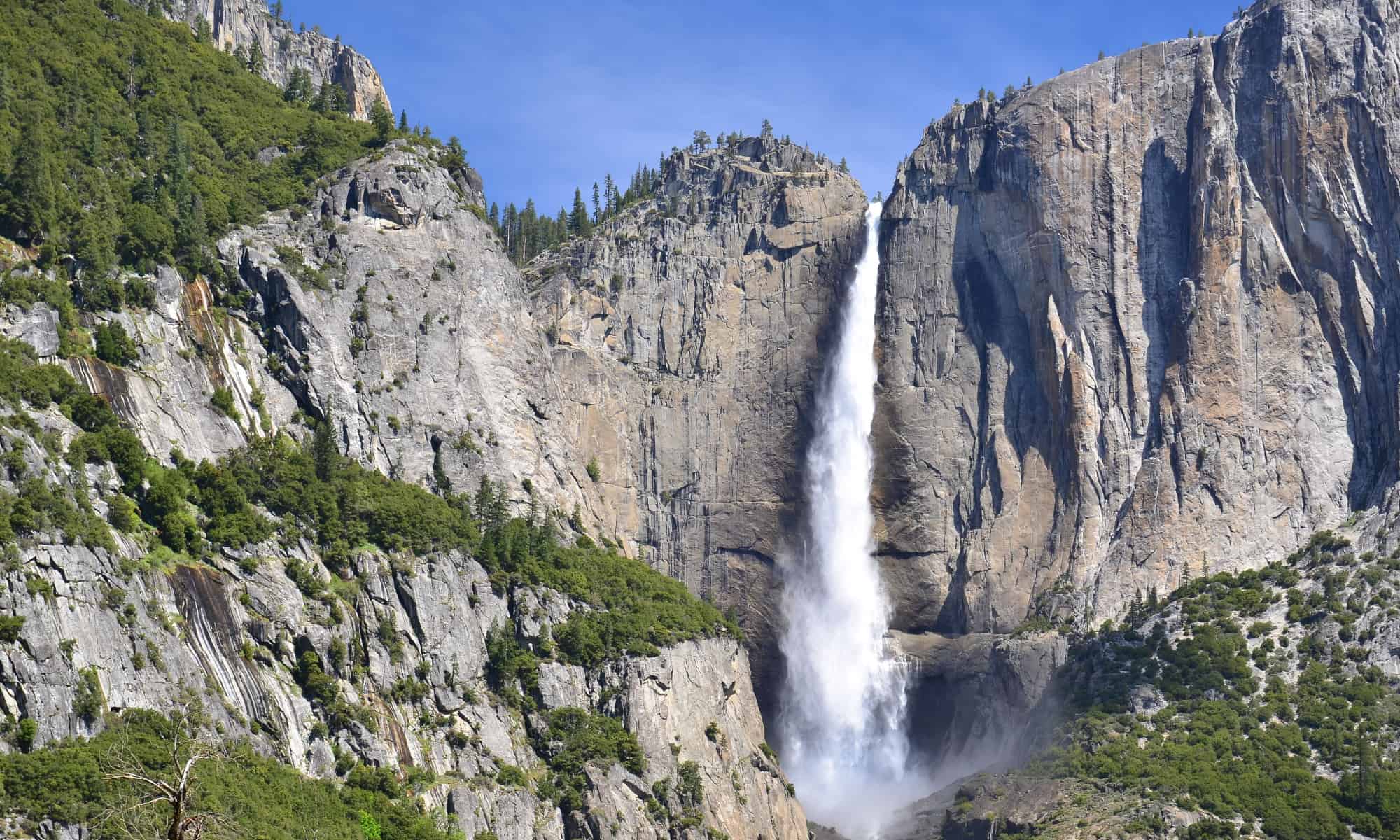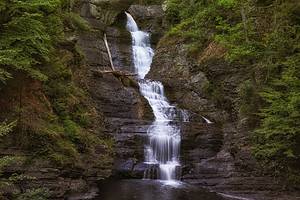Yosemite National Park is in the Sierra Nevada Mountains of eastern California. It is known for its granite rock formations, giant sequoia trees, and the beautiful glacier-carved Yosemite Valley. Yosemite’s stunning natural features and vast wilderness make it an incredibly popular destination for people who want to experience the great outdoors. In 2022, the park had a whopping 3,667,550 visitors! Most of Yosemite’s visitors come to spend time in Yosemite Valley, a glacial valley featuring many of the park’s most famous attractions. Two of the valley’s most famous features are El Capitan and Half Dome, huge granite rock formations. Yosemite Valley is also home to several stunning waterfalls, including the tallest waterfall in North America. This article explores the tallest waterfall in Yosemite including its location, history, and nearby wildlife.
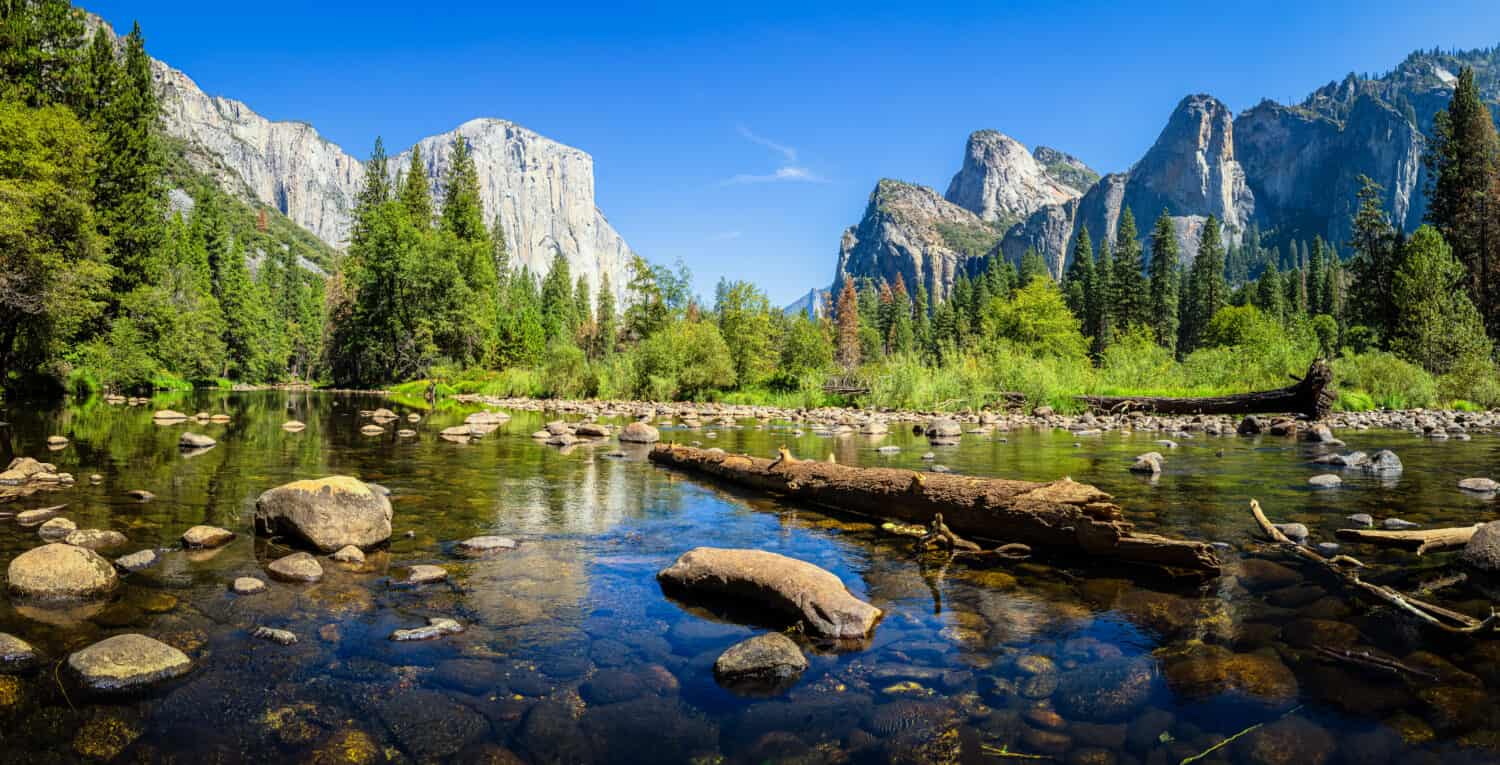
Yosemite Valley is the most visited part of Yosemite National Park.
©Nyokki/Shutterstock.com
Tallest Waterfall in Yosemite National Park
At a jaw-dropping 2,425 feet, Yosemite Falls is not only the tallest waterfall in Yosemite National Park, but the tallest waterfall in North America. This amazing waterfall is not just a main attraction for today’s visitors to Yosemite, it is an important natural feature to indigenous people dating back thousands of years. The following sections explore Yosemite Falls’ location, history, and wildlife.
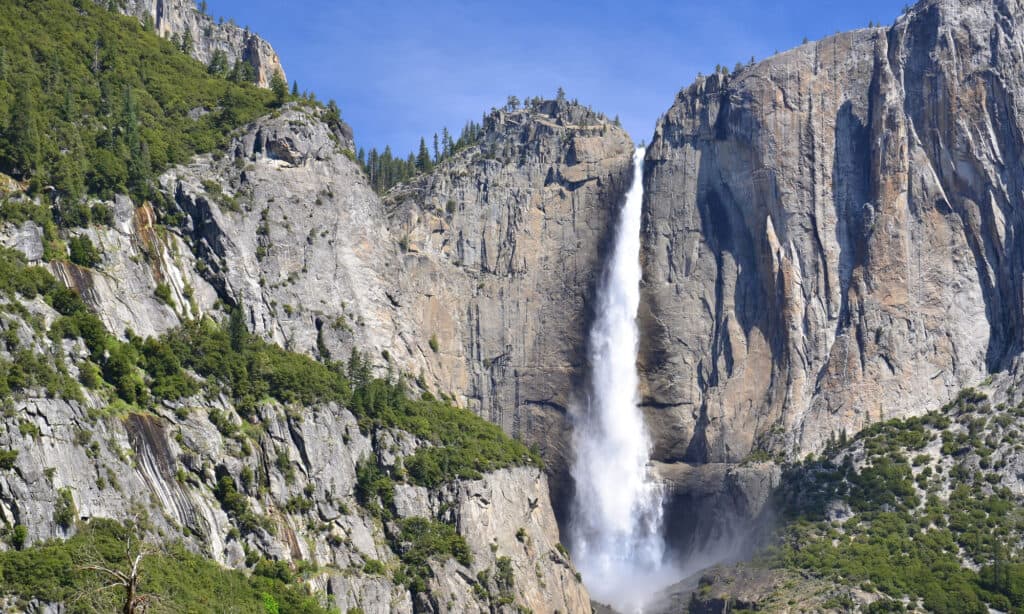
Yosemite Falls is a popular destination in spring when it is at its peak water flow.
©A.Hornung/Shutterstock.com
Location of Yosemite National Park and Yosemite Falls
Yosemite National Park Location
Yosemite National Park is in the Sierra Nevada Mountains of California. The Sierra Nevada Mountains run north to south 400 miles in eastern California. Yosemite National Park is in between two other large federal forest lands: Sierra National Forest to the southeast and Stanislaus National Forest to the northwest. Yosemite is a part of four different California counties: Tuolumne, Mariposa, Mono, and Madera. The national park covers 759,620 acres of mountains, forests, and valleys in the Sierra Nevadas.
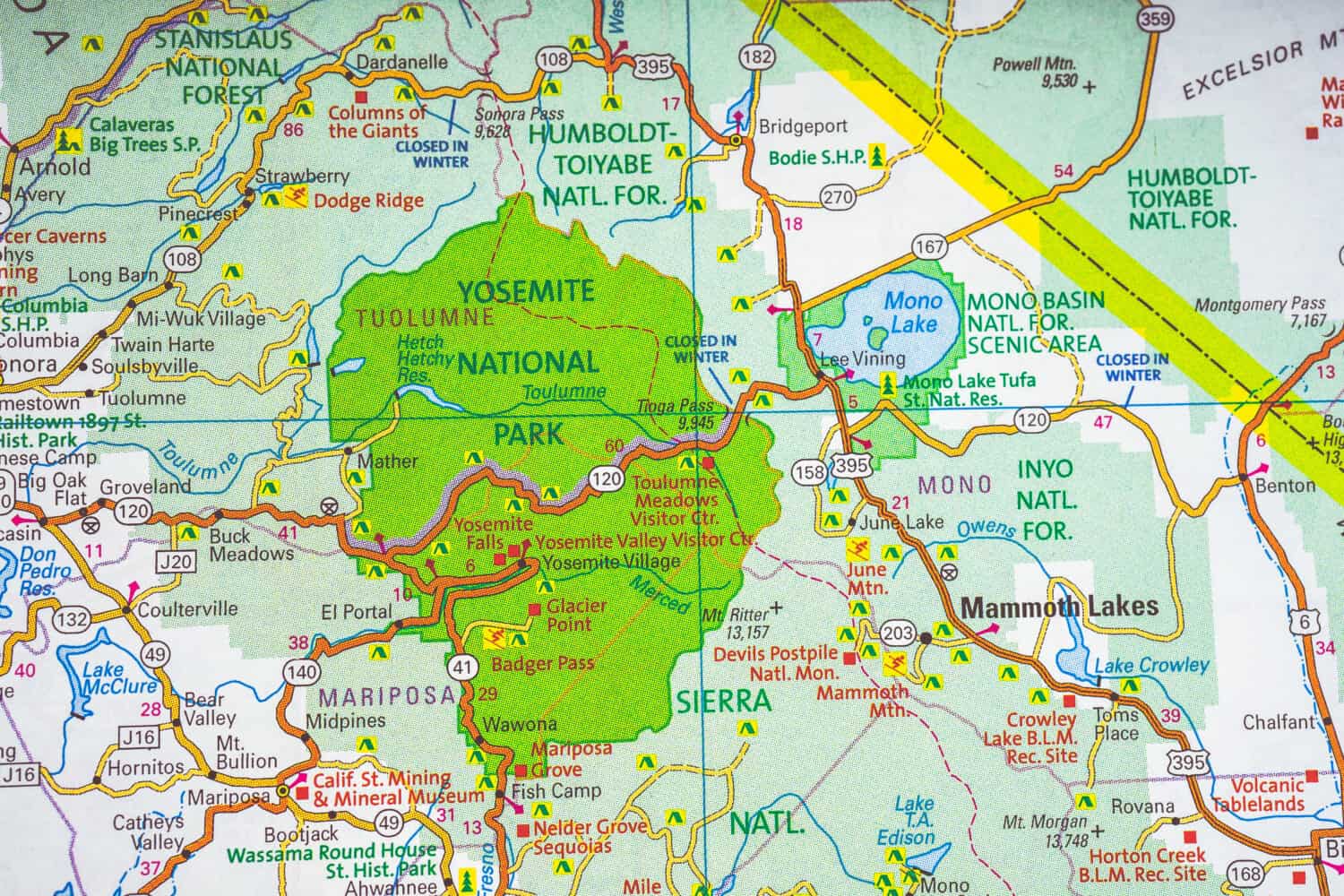
Yosemite National Park is located southeast of Stanislaus National Forest and northwest of Sierra National Forest.
©Alexander Lukatskiy/Shutterstock.com
Yosemite Valley Location
Many of Yosemite National Park’s biggest attractions are in Yosemite Valley, including Yosemite Falls. The valley is in the southern part of the park, around 170 miles east of San Francisco, CA. Many prominent summits frame the valley, such as North Dome (7,539 feet) to the north, Half Dome (8,809 feet) to the east, and Sentinel Dome (8133) to the south. Yosemite Valley is easily accessible by road. El Portal Road, Big Oak Flat Road, and Wawona Road all enter the valley from the west.
Yosemite Falls Location
Yosemite Falls is located on the north end of Yosemite Valley. The falls are a part of Yosemite Creek, a 15-mile creek which runs north to south through the park. After Yosemite Falls, Yosemite Creek joins the Merced River in Yosemite Valley.
History of Yosemite Falls
Yosemite National Park is on the ancestral lands of Ahwahnechee people. Indigenous people have lived in the Yosemite Valley for thousands of years. There are seven tribes of Ahwahnechee people. Yosemite Valley was home to mostly Southern Miwok people. The main village of the Southern Miwok people was historically located at the base of Yosemite Falls in Yosemite Valley. The valley was called Ahwahnee by the Southern Miwok people, which means ‘gaping mouth-like place’.
Non-native people began to arrive in Yosemite Valley during the California Gold Rush of 1849. As the miners began to take over the native people’s land and resources, violent conflicts arose between the two groups. In 1950, these conflicts escalated into war. In 1851, the state of California formed the Mariposa Battalion, a volunteer militia group. The Mariposa Battalion was sent to eliminate native people from the Yosemite Valley as a part of the ongoing native genocide in California. This battalion captured Tenaya, the chief of the Ahwahnechee people, and the band surrendered. Members of the Ahwahnechee were sent to live on reservations.
Beginning in 1855, tourists began visiting Yosemite Valley. The valley then grew in popularity due to the work of conservationists and artists. In 1864, President Abraham Lincoln signed a bill that gave Yosemite to the state of California and dedicated the land to public use. It was the first time the federal government had ever legislated to protect scenic lands. When the National Park Service was created in 1916, Yosemite became a national park.
Wildlife Around the Tallest Waterfall in Yosemite
Yosemite National Park is abundant with wildlife. It is one of the largest unfragmented habitats in the Sierra Nevadas. Habitat fragmentation is when one area is split into smaller, separate pieces, usually by human development. Habitat loss and fragmentation contribute to many ecological concerns including loss of biodiversity, decreased biomass, and changed nutrient cycles. Due to the efforts of early American conservationists, Yosemite remains a large continuous habitat for wildlife. Since most of the park’s traffic is in the 3,800-acre Yosemite Valley, ample space remains for wildlife to live life unseen and undisturbed. However, some animals such as black bears can be attracted to places where there are people, because there is usually food there. Let’s explore some of the amazing animals that live near the tallest waterfall in Yosemite National Park!
American Black Bear (Ursus americanus)

Despite their name, black bears can be many different colors including brown, cinnamon, and blonde.
©FiledIMAGE/Shutterstock.com
Black bears are the only species of bear in California. Although a grizzly bear appears on the state’s flag, grizzlies have gone extinct in the state. In 1922, the last known grizzly bear in California was shot outside Yosemite. However, there are current efforts to reintroduce them to the state. For now, California is home to two subspecies of black bears: the Olympic black bear (Ursus americana altifrontalis) and the California black bear (Ursus americana californiensis). The California black bear is the subspecies that lives in Yosemite. There are around 300-500 black bears in Yosemite. While the average male black bear weighs around 250 pounds, the largest ever captured in Yosemite weighed a whopping 690 pounds. Black bears grow to their largest before winter hibernation. In fall, they gorge on up to 20,000 calories in preparation for hibernation.
Visitors who see a bear in Yosemite National Park should follow the parks guidelines in order to keep themselves and the wildlife safe.
Sierra Nevada Bighorn Sheep (Ovis canadensis sierrae)
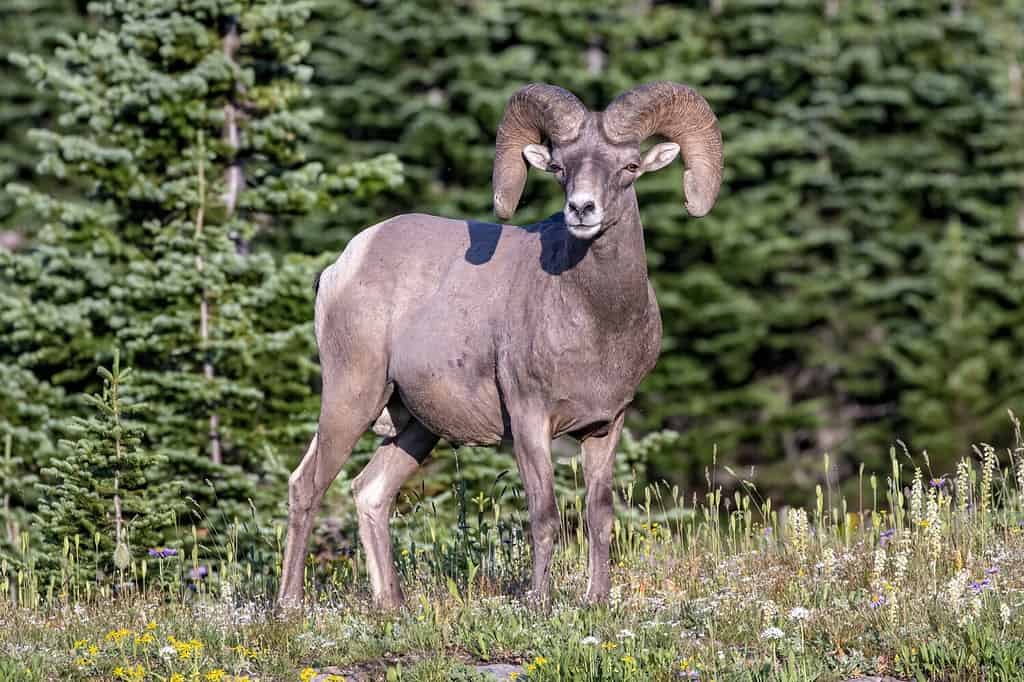
The Sierra Nevada
bighorn sheep
is a subspecies of bighorn sheep (
Ovis canadensis).
©Wirestock Creators/Shutterstock.com
Sierra Nevada bighorn sheep live only in the Sierra Nevadas. They are adapted to alpine life, and easily navigate the steep and rocky terrain. Sierra Nevada bighorn sheep almost went extinct due to hunting and disease transmitted by domestic sheep. In its first 25 years as a National Park, Yosemite lost all of its Sierra Nevada bighorn sheep population. A massive restoration project began in 1986. In 2000, the Sierra Nevada bighorn sheep was listed as a federally endangered species. Due to conservation efforts, the population of Sierra Nevada Bighorn sheep has grown from 125 in 1999 to 500 in 2020.
California Red-Legged Frog (Rana draytonii)

The California red-legged frog only lives in around 30 percent of its historic range, but conservation efforts are underway.
©Wirestock Creators/Shutterstock.com
At 2-5 inches long, the California red-legged frog is the largest frog in the American west. These frogs are native to Yosemite, but were gone from the park for nearly 50 years due to competition with non-native species. However, a recovery project beginning in 2016 has reintroduced them to the park. These efforts are ongoing. In 2019, a new generation of California red-legged frogs was discovered in the park. This is fantastic news for the species’ recovery. The California red-legged frog currently has an IUCN conservation status of Near Threatened.
Thank you for reading! Have some feedback for us? Contact the AZ Animals editorial team.

